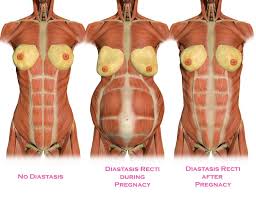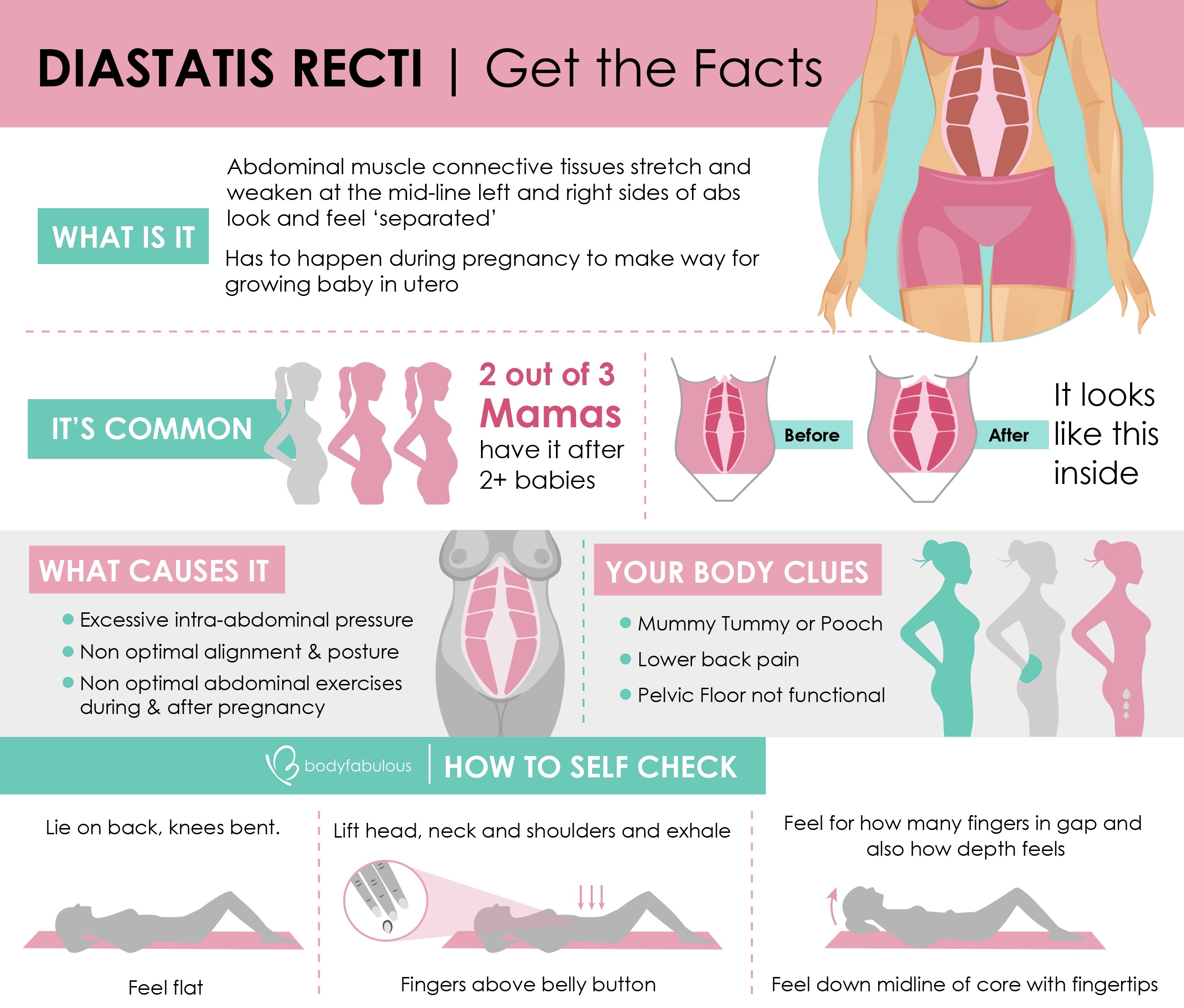Diastasis recti (DR) can be a big concern both during and after pregnancy. If you aren’t sure what diastasis recti is – it’s abdominal separation that occurs during pregnancy and continues both birth. This separation is completely normal and HAS to happen during pregnancy – your core needs to separate to make way for your growing baby and also needs time to heal post birth. Also learning how to measure Diastatis Recti post birthan and the best time to do this is important.
Almost every woman gets some degree of abdominal separation postpartum. However when measuring abdominal separation it is not just about the width or gap of the separation that needs to be assessed, but also the depth – that runs along the linea alba / center of your core. When I measure my clients for DR my focus is mainly on the “connection” or fascia/muscle tension of the linea alba rather than just looking at how wide the “separation” is.
GRAB YOUR COMPLIMENTARY DIASTATIS RECTI GUIDE HERE
You can heal and prevent diastatis recti
It starts with training your core safely and effectively during pregnancy then continuing this post birth so that it heals effectively before embarking on any intense forms of exercise. Don’t stress – it is never too late to start. Remember, your core is complex (it’s more than just a 6 pack) so effective core rehab can begin if you have no medical complications to exercise. Core training begins with the foundation of your core, your pelvic floor, this area should be given major priority during and after pregnancy. Learn more with my complimentary core training guide.
How to measure diastatis recti
The diastatis or split in the abdominal ‘6 pack’ muscles is measured by the number of finger spaces that fit between each side of the rectus diastasis core muscles. When looking at the separated abdominals there are different levels to consider ..
1. Normal Separation = 1 finger space separation or less and very firm linea alba /fascia in between the gap.
2. Functional Diastatis = 1 – 2 finger space or less moderately firm linea alba / fascia in between gap. Can hold good tension of the abdominals without excessive coning or bulging while exercising and breathing correctly.
4. Diastasis Recti = a separation or gap between the rectus abdominis muscles of 2 1/2 or more finger spaces or a distance of 25 mm (just less than 1 inch). This means the tissues joining the rectus abdominis muscles have either stretched or split apart. The linea alba between the abdominals is also is very soft and does not hold effective tension during movement
Watch my video below on how I measure abdominal separation on Melita from Mammojo – postpartum.
How to measure diastasis recti
This can be done on your own or you have a Women’s Health Physio or Certified Pregnancy Trainer check you.
Step 1 Lie down on your back with both knees bent, feet hip with apart. Shoulders are relaxed and spine is neutral.
Step 2 Place your index and third fingers directly above your navel (belly button). Your fingers should be aligned side by side and pointing in the direction of your feet.
Step 3 Raise your head and shoulders off the supporting surface and breath out (don’t hold your breath as this will cause too much intra abdominal pressure – causing further diastatis) feel for any gap or dip under your fingers.
Step 4 Lower your upper body back to starting position.
Remember it is not just about the gap it is about the tension below. As previously mentioned above there are varying degrees of abdominal separation.
What exercises are suitable for Diastatis Recti ?
Unfortunately I see many women return workouts after pregnancy and childbirth and perform inappropriate abdominal exercises as their goal is to flatten their belly and lose the dreaded “mummy tummy” as soon as possible. Many traditional core exercises such as sit up, crunches and planks can delay healing or worsen rectus diastasis plus cause pelvic floor issues like incontinence and prolapse.
Exercises to promote healing of diastasis recti are core exercises that retrain the control and support of the deep core abdominal muscles (e.g. transverse abdominis). The best place to start to do this is by tuning into your breath – as your diaphragm is connected to your deep core muscles, you can actually breathe your way to a better core !
How you breath when you lift your baby, toddler and pram can heal or damage your core due to intra-abdominal pressure. Learning to focus on your core not just during a workout but how you go about your daily activities is going to give you the best longterm outcome. Once your core breath becomes an integral part of every movement you can then combine this with other safe and effective deep core exercises (and yep they are NOT crunches). Learn how with complimentary core training guide – suitable for during pregnancy and postpartum (with medical clearance to exercise)
When you are cleared for exercise post birth, please rehab your core before you retrain.
As diastasis recti needs safe movement that promote healing. This typically starts with re-learning how to activate deep core abdominal muscles correctly with gentle movement and effective core breathing. Then when you are ready you can progress to deeper core abdominal exercises.
Remember – recovery can be short term if done correctly but damage can be long term, so take the time to do this. Even better start training your core NOW during pregnancy !
Any questions reach out in my Facebook Community called the #BFABSQUAD
xx


About Dahlas
Dahlas Fletcher is one of Australia’s most respected and successful certified and experienced Pregnancy and Female Fitness Trainers. Her goal is to help you be the happiest, most fabulous version of yourself, inside and out.






